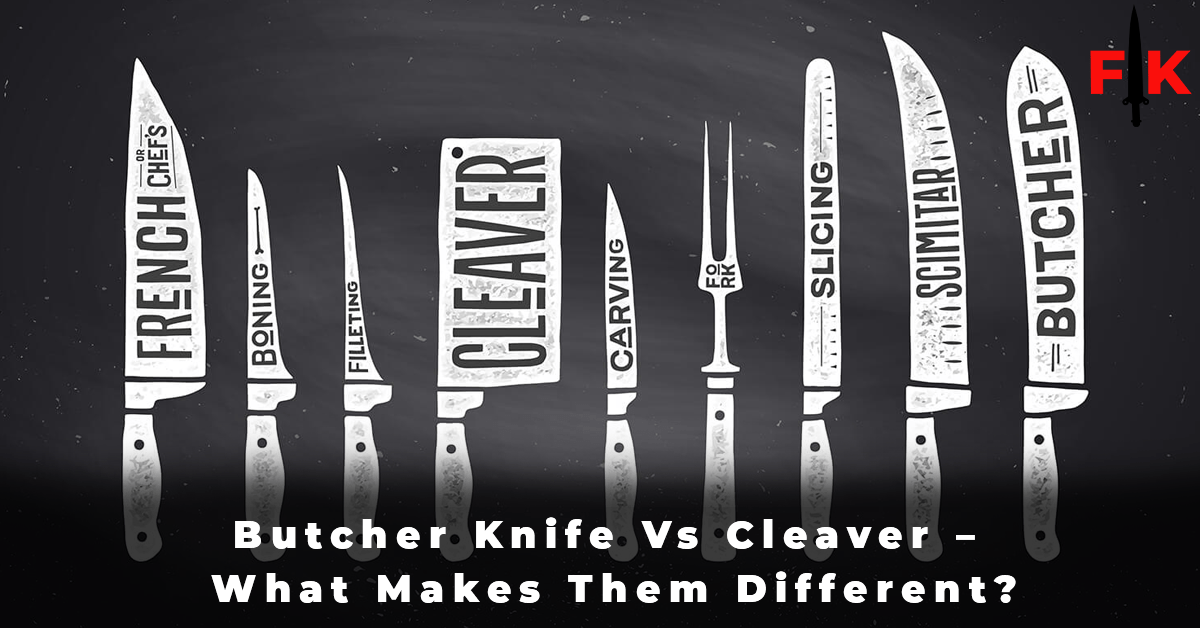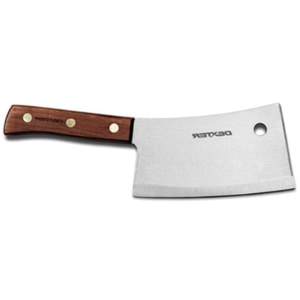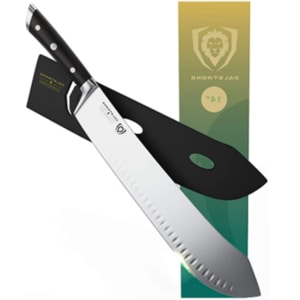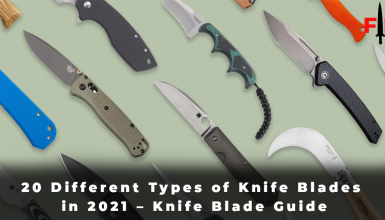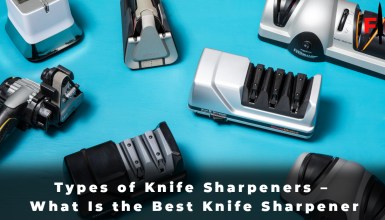In a set of Kitchen knives, the Butcher knife, as well as the Cleaver, are must-haves whether you’re working for a professional kitchen or the one at your home. The question arises here: “What is a Cleaver knife used for and what is a butcher knife used for?” Here’s the answer.
Although most of the work done by both the knives is almost the same, the difference occurs in their working abilities. Both the knives are great for cutting, splitting, or stripping meat. But when compared to the Butcher knife, Cleaver does all the work but in a more refined way because of its thicker, sharper, broader, and refined blade.
Table of Contents
What is the Difference Between a Butcher Knife and a Cleaver?
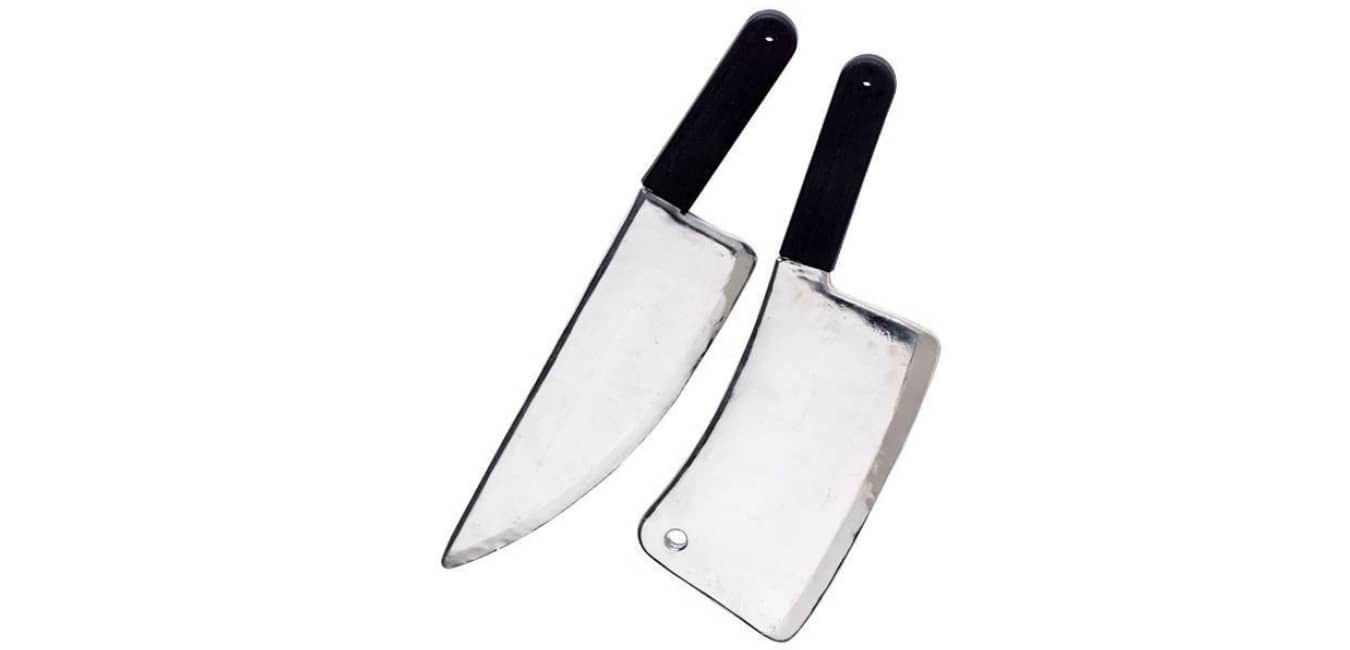
Butcher knives are simply the type of knives used mostly by the butchers to cut or chop the meat. There are so many different types of butcher knives and each one serves the purpose differently with the main objective being the cutting of meat.
The knives used in butcher shops and restaurants are typically butchered knives. The slight curve of the knife makes it easier to cut through the meat.
While Cleaver knives, are also used for cutting and chopping meat but specifically, the very large pieces of meat. These knives usually have large intimidated blades that work perfectly for butchering the meat and cutting even through the bones.
With a long and wide blade, cleavers are among the largest cutlery knives in the chef’s kit. Also, the blade’s shape varies depending on where the knife is manufactured, but it is in essence rectangular and much wider than any other kitchen knife.
What is the difference between a meat cleaver and a Chinese chef’s knife?
Traditionally, a meat cleaver is very much similar to hammers. Despite its size and weight, it has a thick, dense blade that won’t chip, crack, or buckle even if it is used for cutting hard bones.
While on the other hand, Chinese chef’s knives have a thin blade and a slender, fine nature, designed for tearing, chopping, and slicing only.
For further details, you may visit:
Butcher Knife Vs Cleaver
Let us see what differences do these knives have in their blades and what are their uses.

What is a Cleaver Knife Used for?
Cleavers are a proper heavyweight. For cleavers, it is possible to vary in shapes but they all have a rectangular blade that looks much like the rectangular bladed hatchet. Here is what cleavers are used for:
- Their purpose is to cut through thick pieces of meat and soft bones.
- With its thick, soft steel blade, it effortlessly cuts through cartilage and bones while keeping the edge sharp.
- You can also use them to tenderize meat or crush the garlic.
What is a Butcher Knife Used for?
Butcher knives, with their heavy, curved blade, are designed to cut through meat quickly and efficiently.
- With the wide blade and curved tip, butcher knives make slicing and trimming raw meat easier.
- Additionally, many butcher knives feature Granton edges to ensure the meat is sliced easily without tearing or shredding.
- As well as cutting through meat, they can work great for scraping bones.
Why Do Butcher Knives Have that Hole?
Butcher knives usually have a hole because cutting through bones is made easier with the powerful blade’s large hole. The hole on the upper part enables you to grasp it with your fingers. Pulling the blade free becomes easier as you strengthen your grip on the handle. By doing so, you save time, effort, and frustration.
Best Meat Cleaver for Cutting Bones
From our research of the very best meat cleavers, we have selected the most efficient Cleaver.
Dexter-Russell Traditional Stainless Steel Heavy Duty Cleaver
The Dexter-Russell cleaver is a heavy-duty cleaver that can easily cut through the largest and the heaviest pieces of meat.
Weight – This Dexter-Russell Cleaver weighs around 4 pounds. Along with a large size, it is also a super heavy cleaver that would work exceptionally for even the largest slices of meat.
Size – The size is simply huge. You might be in shock at first when you see it. The blade is 9 inches long and the overall size makes it around 13 inches long, 10 inches wide and 1.5 inches handle.
Blade Design/Shape – The blade is entirely rectangular and pretty much broader in its width. It is not a completely straight blade, but just a little bit curved.
Blade Thickness – The blade is 6mm thick and is super sharp right out of the box. So you must be careful with it.
Blade Material – The blade is made up of Stainless steel; definitely best of the best materials for knives’ blades.
Ergonomic Design – Even though the knife is very much heavy in weight, the knife has a super-efficient design that makes it easier to use for cutting and butchering the meat. It is super comfortable and non-slippery in the hands.
What Size Meat Cleaver is Best?
7 to 9 inches is the ideal blade length for a cleaver. The size range for most cleavers is in this range, as it offers the best versatility and maneuverability. Other than these, there are cleavers with blades of 12 inches that work exceptionally well for heavy-duty work and in dealing with bigger pieces.
What Should I Look for When Buying a Cleaver?
The size of the cleaver, the material of its blade, and the sharpness of its edge are the most important things to look at while buying a cleaver knife.
For meat cleavers, flat grinds or a “V” edge are most commonly used. With their tough steel blades, this grind provides an edge that is ideal for chopping and batoning. There are two types of cutting edges: straight or with a curved belly. Both are great for efficient cutting.
Best Professional Meat Cutting Knife
Out of so many options available, our topmost favorite butcher knife is the DALSTRONG’s Gladiator Series butcher knife.
DALSTRONG – Bull Nose Butcher & Breaking Knife
Weight – This Bullnose butcher knife Is not as heavy as the cleavers. It weighs 1 pound and does not feel heavy in your hands. Due to its lighter weight, it makes cutting and chopping very efficient and quick.
Size – The blade of the knife is about 14 inches in length. While the overall size of the knife makes it around 22 inches long, 5 inches wide and a 1.3 inches handle.
Blade Design/Shape – As the name tells, the knife has a pointed, bullnose shape with a long, thin blade. This knife has a long, scalpel-like blade edge at the front; ensuring longer, cleaner cuts.
Blade Thickness – The blade of this Bull Nose butcher knife is about 2.5 mm thick which is a nice and suitable thickness for a sharp butcher knife.
Blade Material – This knife from DALSTRONG’s Gladiator series has a blade made from High Carbon German ThyssenKrupp steel; one of the most exceptional materials for sharper blades.
Ergonomic Design – Featuring a luxurious black G10 handle, the knife has a three-riveted grip for increased comfort and maneuverability. By increased strength and control, the weighted nose makes it easy to make large cuts, while the curved geometry of the blade enables skinning and portioning to be conducted more efficiently and effectively.
Cleaver Vs Butcher Knife – Comparison
| Product | Dexter-Russell Traditional Stainless Steel Heavy Duty Cleaver | DALSTRONG – Bull Nose Butcher & Breaking Knife |
|---|---|---|
| Manufacturer | Dexter | DALSTRONG |
| ASIN | B001505OT6 | B07QZ4LPN6 |
| Dimensions | 13.58 inches x 10.31 inches x 1.5 inches | 22.4 inches x 4.84 inches x 1.38 inches |
| Weight | 4 pounds | 1 pound |
| Thickness | 6 mm | 2.5 mm |
| Blade Material | Stainless Steel | High Carbon German ThyssenKrupp steel |
Conclusion
Both the butcher and cleaver knives are an exception. If you’re looking for a heavy-duty knife, probably for the professional chef uses such as cutting of large pieces of meat and through the bones, then a cleaver would work ideally for you.
On the other hand, if you’re looking for a comparatively lighter knife with a thinner blade for cutting and chopping not-so-large pieces of meat, then you should go for the butcher knives.

